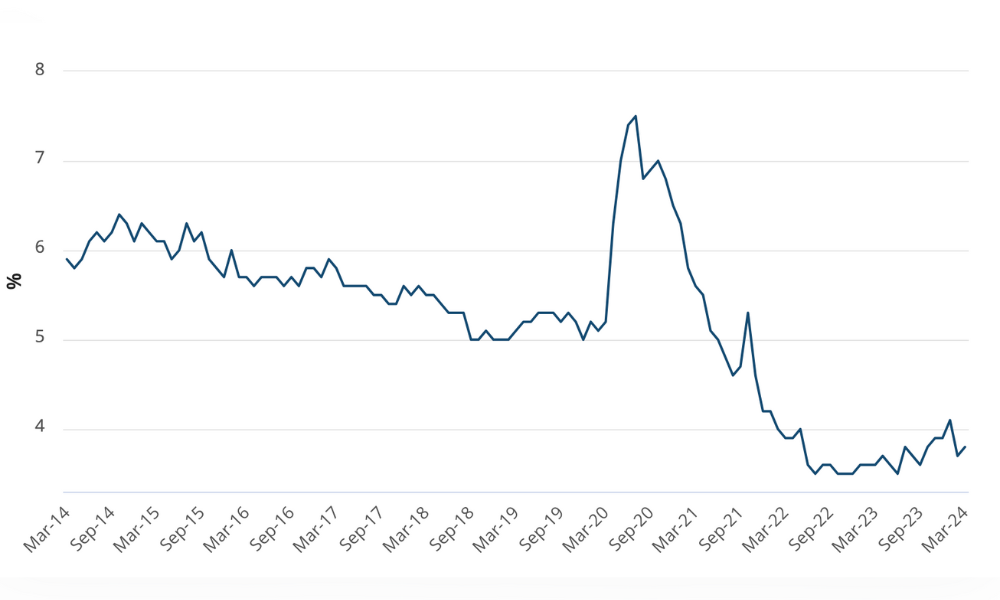Twitter can be a powerful tool in your recruitment arsenal, but just as with any other method if you don’t get it right then it will fail to bring in the candidates. Here are four tips to help get it right.
Twitter is growing in popularity as a recruitment tool, but to ensure it is effective you need to be doing it right. Here are four tips for success in Twitter recruitment:
1. Use hashtags.
Failing to use hashtags limits your audience, especially if you are a small organisation without many followers.
"Adding hashtags makes it searchable by all Twitter users beyond your followers," Joe Budzienski, who founded Gozaik, told Inc.com.
While the most common hashtags are #careers, #jobs and #werehiring, industry experts recommend being more specific such as hashtag the location of the role and a key skill.
Twitters Recruiting Programs Officer, Anitra Collins adds another key strategy is to get other employees to Tweet about openings in their department to increase overall exposure.
2. Don’t just tweet classifieds
Try to avoid a social media feed filled with job listings - instead mix in industry news and other organisational titbits to build engagement with job-seekers and those within the industry who aren’t actively job-hunting.
"Even if they're not ready to make that career jump right now, they'll remember that you had content and drew them in," Budzienski said.
Collins also suggests re-Tweeting employees tweets about the company as they can be the best advocate for the company.
3. Monitor and engage
There is no point tweeting a job if you don’t have someone on hand to respond to any @ replies from potential candidates – the job-seeker could move on if there is no response to their query.
Social recruitment is all about building relationships, and that can only happen with two-way dialogue therefore don’t be afraid to directly tweet potential candidates directing them to current job listings. Collins explains that these exchanges “make the process much more personal”.
4. Scope out potential candidates
If someone's reached out via Twitter about a job opening it provides you with the opportunity to learn more about them as a candidate.
"Different social networks can tell you a lot about someone," Budzienski told Inc.com. "LinkedIn is great for seeing a candidate's experience and education, while Facebook helps demonstrate the person's interests and hobbies. Twitter is a great tool to get insight into a candidate's interests, as they'll often follow specific industry leaders and share content about certain topics. There's no better place to get a window into someone's personality than social media."
1. Use hashtags.
Failing to use hashtags limits your audience, especially if you are a small organisation without many followers.
"Adding hashtags makes it searchable by all Twitter users beyond your followers," Joe Budzienski, who founded Gozaik, told Inc.com.
While the most common hashtags are #careers, #jobs and #werehiring, industry experts recommend being more specific such as hashtag the location of the role and a key skill.
Twitters Recruiting Programs Officer, Anitra Collins adds another key strategy is to get other employees to Tweet about openings in their department to increase overall exposure.
2. Don’t just tweet classifieds
Try to avoid a social media feed filled with job listings - instead mix in industry news and other organisational titbits to build engagement with job-seekers and those within the industry who aren’t actively job-hunting.
"Even if they're not ready to make that career jump right now, they'll remember that you had content and drew them in," Budzienski said.
Collins also suggests re-Tweeting employees tweets about the company as they can be the best advocate for the company.
3. Monitor and engage
There is no point tweeting a job if you don’t have someone on hand to respond to any @ replies from potential candidates – the job-seeker could move on if there is no response to their query.
Social recruitment is all about building relationships, and that can only happen with two-way dialogue therefore don’t be afraid to directly tweet potential candidates directing them to current job listings. Collins explains that these exchanges “make the process much more personal”.
4. Scope out potential candidates
If someone's reached out via Twitter about a job opening it provides you with the opportunity to learn more about them as a candidate.
"Different social networks can tell you a lot about someone," Budzienski told Inc.com. "LinkedIn is great for seeing a candidate's experience and education, while Facebook helps demonstrate the person's interests and hobbies. Twitter is a great tool to get insight into a candidate's interests, as they'll often follow specific industry leaders and share content about certain topics. There's no better place to get a window into someone's personality than social media."





